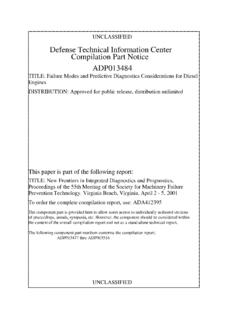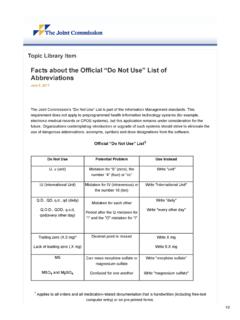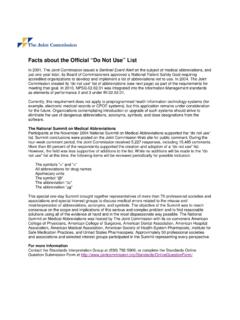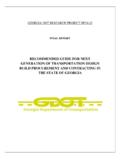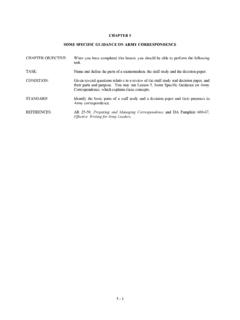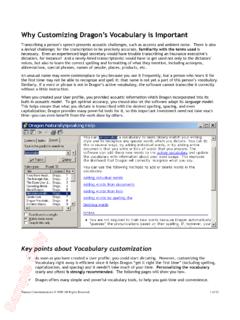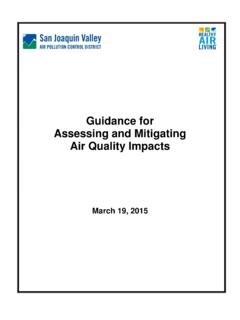Transcription of AIR FORCE INSTITUTE OF TECHNOLOGY
1 A SPREADSHEET MODEL THAT ESTIMATES THE IMPACT OF REDUCED DISTRIBUTION TIME ON INVENTORY INVESTMENT SAVINGS: WHAT IS A DAY TAKEN OUT OF THE PIPELINE WORTH IN INVENTORY? THESIS Serhat SAYLAM, First Lieutenant, TurAF AFIT-LSCM-ENS-12-17 department OF THE AIR FORCE AIR UNIVERSITY AIR FORCE INSTITUTE OF TECHNOLOGY Wright-Patterson Air FORCE Base, Ohio Distribution Statement A APPROVED FOR PUBLIC RELEASE; DISTRIBUTION UNLIMITED The views expressed in this thesis are those of the author and do not reflect the official policy or position of the Air FORCE , department of defense , or the Turkish Government.
2 AFIT-LSCM-ENS-12-17 A SPREADSHEET MODEL THAT ESTIMATES THE IMPACT OF REDUCED DISTRIBUTION TIME ON INVENTORY INVESTMENT SAVINGS: WHAT IS A DAY TAKEN OUT OF THE PIPELINE WORTH IN INVENTORY? THESIS Presented to the Faculty department of Operational Sciences Graduate School of Engineering and Management Air FORCE INSTITUTE of TECHNOLOGY Air University Air Education and Training Command In Partial Fulfillment of the Requirements for the Degree of Master of Science in Logistics Management Serhat SAYLAM, First Lieutenant, TurAF March 2012 Distribution Statement A APPROVED FOR PUBLIC RELEASE.
3 DISTRIBUTION UNLIMITED AFIT-LSCM-ENS-12-17 A SPREADSHEET MODEL THAT ESTIMATES THE IMPACT OF REDUCED DISTRIBUTION TIME ON INVENTORY INVESTMENT SAVINGS: WHAT IS A DAY TAKEN OUT OF THE PIPELINE WORTH IN INVENTORY? Serhat SAYLAM, First Lieutenant, TurAF Approved: _____//SIGNED//_____ 03/13/12 ___ Dr. William A. Cunningham, III (Advisor) date _____//SIGNED//_____ 03/09/12 ___ Marvin A. Arostegui Jr., (Reader) date AFIT-LSCM-ENS-12-17 Abstract In most of the literature dealing with inventory problems, either with a deterministic or probabilistic model, lead time is viewed as a prescribed constant or a stochastic variable, which therefore, is not subject to control.
4 But, in many practical situations, lead time can be reduced by an extra crashing cost; in other words it is controllable. This study proposes a repeatable spreadsheet optimization model that estimates the impact of reduced replenishment lead time on inventory investment savings at forward and strategic locations to motivate decision makers to support enterprise-wide distribution process improvement. The contribution of this study is that a means of automatically calculating the inventory control parameters such as safety stocks and reorder points, and estimated savings caused by lead time mean or variability reduction is provided to the user.
5 So, a trade-off analysis can be done as to whether reducing lead time would override the lead time crashing cost. First, the model finds the optimal safety factor of an item based on a fill rate goal using Excel Solver. Then, Excel s VBA automates the process of finding safety factors for other items before and after lead time reduction. Finally, the model is applied to three different supply support activities to show the superior features of the model that also allow the user to change and upgrade it for future research. AFIT-LSCM-ENS-12-17 Dedication To Wife, Mother and Brother Acknowledgments First of all, I would like to express my sincere appreciation to my faculty advisor, Dr.
6 William Cunningham, for his guidance and support throughout the course of this thesis effort. The insight and experience was certainly appreciated. I would, also, like to thank my sponsor, Lt. Col. Gulick, from the United States Transportation Command for both the support and latitude provided to me in this endeavor. Additionally, I thank my reader, Dr. Marvin A. Arostegui, for reading my thesis draft. I owe gratitude to my wife. Her patience, understanding and unconditional love have been tremendously valuable to me. She fully supported me and sacrificed so much so that this final product is as much hers as it is mine.
7 I dedicate this thesis to my beautiful and lonely country, which I love passionately and to our great leader, Atat rk. Without him, Turkey wouldn't be where it is today and I wouldn t be here accomplishing this research effort. Serhat SAYLAM Table of Content Abstract .. iv v List of Figures .. ix List of Tables .. x List of Abbreviations .. xi List of Notations .. xii I. Introduction .. 1 Background .. 2 Research 6 Investigative Questions .. 6 Assumptions and Notations .. 7 Organization .. 7 II. Literature Review .. 9 Normally Distributed Demand and Lead Time .. 9 Ordering Cost .. 9 Inventory Carrying Cost.
8 10 Stock-Out Cost .. 11 Safety Stock .. 13 1. Safety Stocks Established through the Use of a Simple-Minded Approach: .. 16 2. Safety Stock Based on Minimizing Cost: .. 17 a. Specified Fixed Cost (B1) per Stock-out Occasion (FCSO) .. 17 b. Specified Fractional Charge (B2) per Unit Short (FCUS) .. 17 c. Specified Fractional Charge (B3) per Unit Short per Unit Time (FCUSUT) .. 17 d. Specified Charge (B4) per Customer Line Item Short (CCLIS) .. 18 3. Safety Stocks Based on Customer Service: .. 18 a. Probability (P1) of No Stock-out per Replenishment Cycle- Cycle Service Level (CSL) .. 18 b. Fraction (P2) of Demand Satisfied from the Shelf- Fill Rate (FR).
9 19 c. Fraction of Time (P3) During Net Stock is Positive- Ready Rate .. 19 4. Safety Stocks Based on Aggregate Considerations: .. 21 Impact of Reduction in Replenishment Lead Time and Variability .. 21 Fill Rate .. 29 III. Modeling .. 32 Background .. 32 Model Formulation .. 35 Basic Spreadsheet Model .. 35 Automating the Process by Using VBA .. 43 IV. Application, Results and Analysis .. 52 Background .. 52 Problem Statement .. 56 Data Collection .. 57 Input Analysis .. 58 Lead Time Input Analysis .. 58 Daily Demand Input Analysis .. 60 Experiments and Results .. 67 Sensitivity 75 V. Conclusions and Recommendations .. 79 Conclusions.
10 79 Further Research .. 83 Appendix A. A Screenshot of The Proposed Spreadsheet Model .. 85 Appendix B. VBA Code .. 86 Appendix C. Storyboard .. 87 Bibliography .. 88 Vita .. 91 List of Figures Figure 1. (s Q) System and Safety Stock .. 14 Figure 2. Safety Stock Logic .. 19 Figure 3. Solver Parameters for the Proposed Model .. 46 Figure 4. VBA Code for the Command Button's Click Event .. 48 Figure 5. Summary of Requisition Lead Time (USTRANSCOM, 2011) .. 54 Figure 6. SSA1 Lead Time Data Normal Distribution .. 59 Figure 7. SSA2 Lead Time Data Normal Distribution .. 60 Figure 8. SSA3 Lead Time Data Normal Distribution .. 60 Figure 9.









